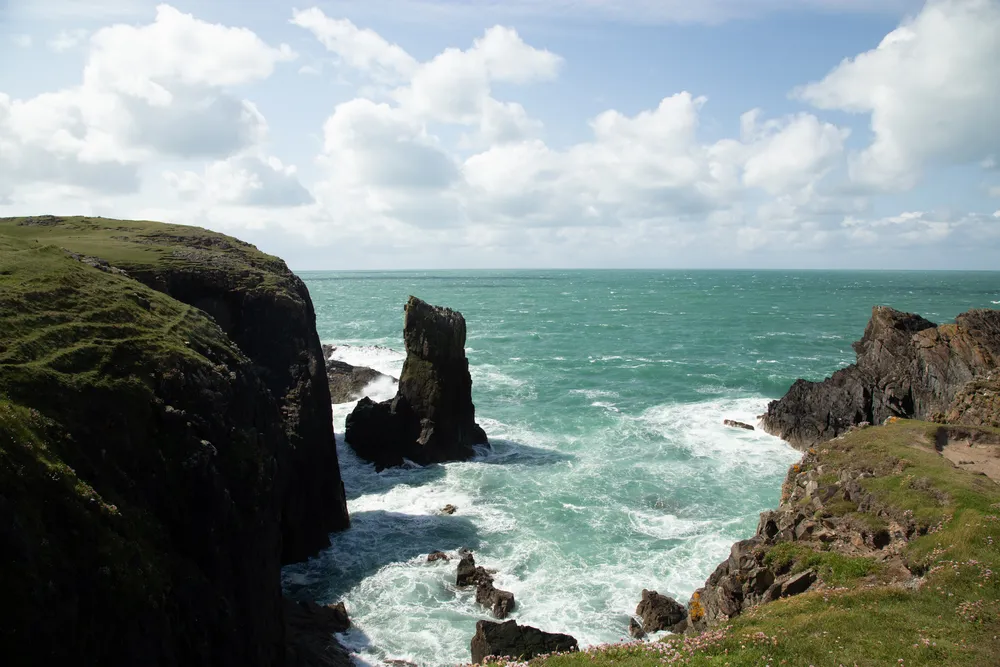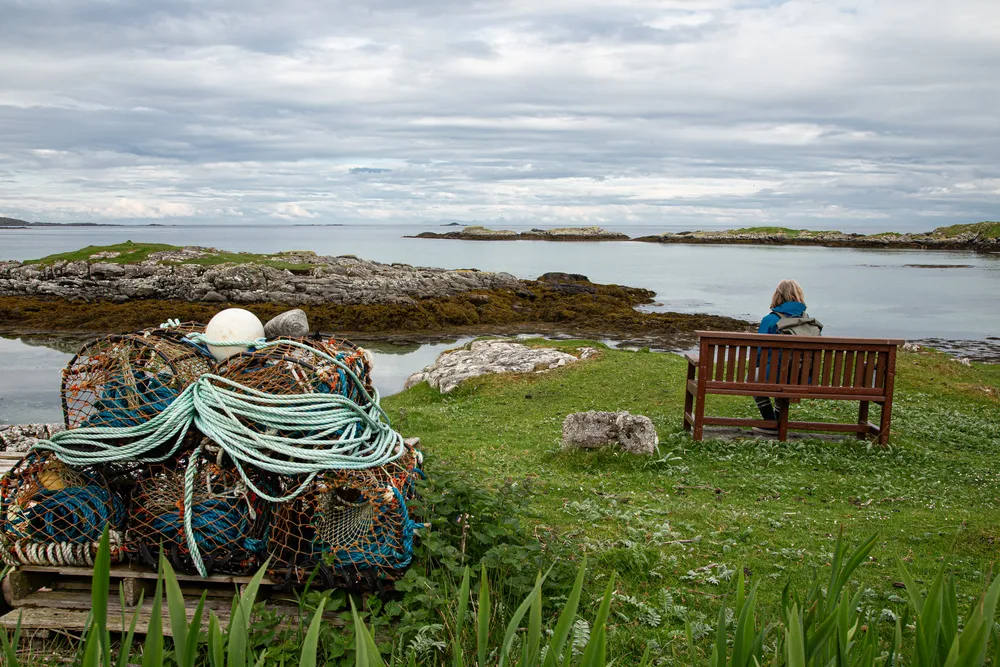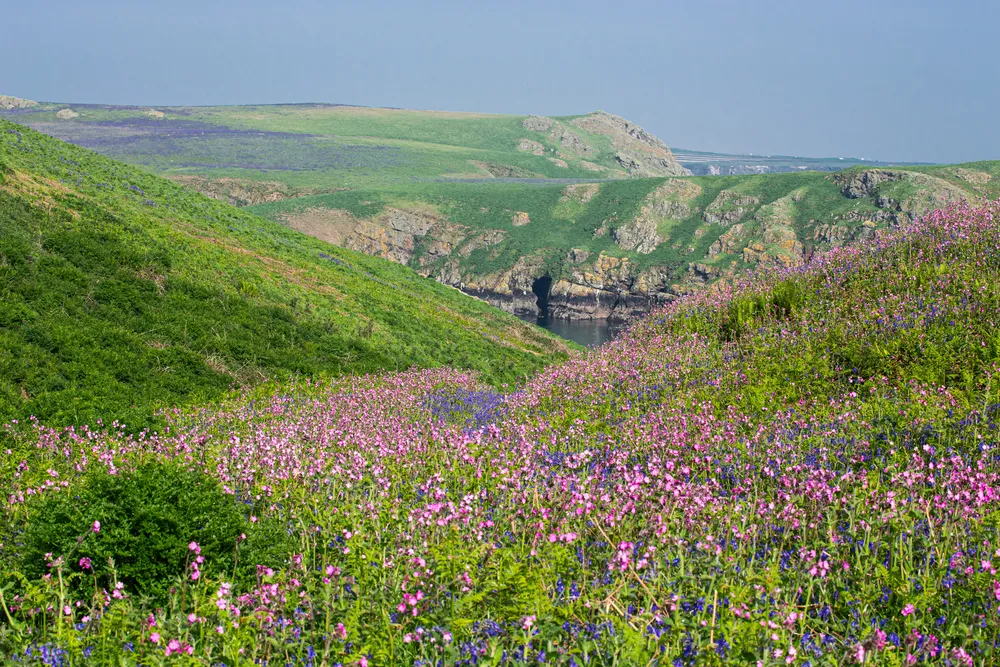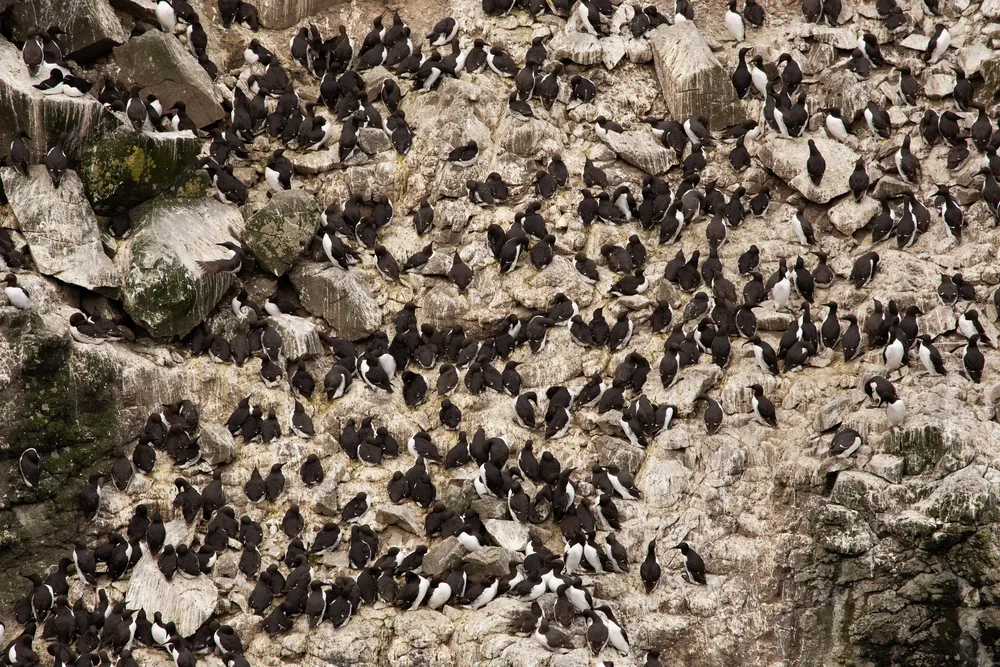We are ready for a trip to the Outer Hebrides. We think excitedly of the large colonies of gannets and puffins and the song of the minke whales that await us there. I can already see us on the white sandy beach of Luskentyre on the west coast of the Isle of Harris, lapped by the turquoise blue sea. It is considered one of the most beautiful beaches in the world. Now we just have to wait for a favorable weather window and then we can set off.
Early April. Full of anticipation, we leave the port of Arzal in Morbihan, Brittany, and glide northwards through the English Channel into the Irish Sea. Spring is the best time of year for a cruise in Scotland. We have decided to take a detour to Stornoway, the northernmost island of the Outer Hebrides. First we head for Bangor in the north of Ireland. During the six months ashore, we have lost our routine somewhat, but it quickly returns. A friend joins us for the crossing. The night watch is definitely more pleasant with three of us. We make a stopover on the Isles of Scilly. We take the opportunity to anchor in the turquoise bay of Tresco and try the much-praised fish and chips in the neighboring restaurant. Our second stop is Skomer. The island is protected and a breeding ground for numerous puffins. Alone at the anchorage, we admire the red-billed clowns as dusk falls, buzzing around us like little helicopters and flapping their short wings wildly. Our friend disembarks in Bangor. We continue our journey in pairs. On the way to Troon on the Scottish coast, where we bought our Fou de Bassan four years ago, we pass Ailsa Craig, “Elisabeth’s Rock”. The island is home to one of the largest gannet colonies in Europe. After ten days and 630 nautical miles, two thirds of which under sail, we reach Scotland. Further west, the Isle of Arran welcomes us with summery conditions. We drop anchor in Brodick under glassy seas and a steel-blue sky. The bay is overlooked by Goat Fell, the highest mountain on the island at 874 meters.
Shortcut through the canal
After the climb, we set our sights on the next destination. To get to Oban, we can either sail around the Mull of Kintyre or cross the Crinan Canal. As there is no wind and we don’t feel like motoring for hours, we opt for the second option. “Enjoy the canal, take your time” is written on the website. Really? We have experienced the passage differently. We constantly have to trim the lines and realign the fenders. We pass through a total of fourteen locks with our bulbous boat and the hull gets its first scratches. Exhausted, we finally reach the open sea again after the last lock. The ocean is deep blue, dotted with several dozen islands under a cloudless sky. This stunning sight takes our breath away. You would think we had strayed into the Cyclades. Then it gets tricky again. To avoid getting caught in the bubbling cauldrons of the dreaded Dorus Mohr and Sound of Luing rivers, we cross them in backwater. Once we arrive in the whisky stronghold of Oban, we move on to Tobermory, the main town on the Isle of Mull known for its colorful houses. Once we arrive in the Outer Hebrides, we are greeted by typical Scottish weather: it is drizzling.
Our favorites:
Isle of Barra First contact with the climatically harsh islands: Castlebay impresses with a seemingly unreal backdrop. A bike ride to Vatersay beach on the neighboring island, which can be reached via a causeway, reveals the turquoise sea. The Caribbean sends its regards!
Loch Bhrollum, Isle of Lewis
Our anchoring noises startle the seals, which are lazily lounging on the algae-covered rocks. They drop indifferently into the dark water. We are alone. A shipwreck on the beach reminds us that we should approach the sea and the elements with the necessary humility.
Stornoway
We excitedly sail into the fairway that leads to the legendary harbor of Stornoway. The sun illuminates the colorful facades and the trawlers are ready to set sail. As we dock at the jetty, the sky suddenly opens its floodgates and the cold sets in. The windswept Isle of Lewis remains true to its reputation: the mood changes unpredictably from one second to the next. Tomorrow we will explore the damp land, where the peat darkens the lochs, in more detail. We also plan to visit the Butt of Lewis, where the brown cliffs covered in green moss echo with the cries of fulmars.
Shiant Islands
The archipelago between Lewis, Harris and Skye, which is spared from tourism, is characterized by an incredible diversity of species. Puffins, guillemots, fulmars, kittiwakes and little penguins nest here, each species in its own territory. We approach the islands in the middle of the breeding season and feel like we are in a huge aviary. The screaming is so deafening that we choose our anchorage in the deep, rocky waters with care. High time to turn back and head for the Isle of Skye. We sail along the Hebrides in fickle winds, but well protected from the waves. To enjoy the Scottish time out a little longer, we moor in a few bays. But even the best things come to an end: we have to return to Brittany on the Fou de Bassan. The Scottish Hebrides have given us a unique cruising experience: not too little, but not too much wind either, a well-protected sea, wild anchorages of breathtaking beauty in the company of seabirds and stopovers in pristine harbors, far away from the crowds. Only the sea can offer time out like this.
Crew: Elisabeth and Bernard Thorens
Boat: OVNI 445, year of construction 2011, Alubat
Accompany the Fou de Bassan on her journey: foudebassan.com







